11 Aug 2010
Putting up panel fencing
We put up a fence to give some shelter from the wind on this corner of the field, and to make a sun-facing 'wall' to plant fruit trees and bushes against.
Panel fencing
Panel fencing is fairly straightforward to put up if you use the bags of ready-mixed post-fixing concrete. It can be done by one person, as I did. The only essential in doing it solo is to knock a length of timber into the ground at an angle as a prop, and nail it temporarily to the post to keep the post upright and steady in the hole whilst you pack it in with rubble (broken brick) and add the concrete mix.
Remove the prop, unless you can use the ground behind the fence; in which case, cut the top of the prop off at the requisite angle, push it round to the back of the post and nail it on. I do this for the extra support and because the prop is already there, almost in position.
A method:
1. Fix the first post in the ground. Dig the hole for the second post in its approximate position.
2. Fix the first panel to the first post, using bricks or blocks to support the other end of the panel.
3. Put the second post in its hole. Fix the post in position and fasten the fence panel to it.
Repeat steps 2 and 3 for each subsequent panel.
If you're on a slope as we are, you'll have to ensure you buy posts long enough to allow for the drop as you go down the steeper parts of the slope.
We painted the fence with Cuprinol Heritage Shades, Old English Green colour, to help blend it in to the background.
Three summers later, the plants against the fence are doing well. This grape vine now reaches across three panels and has a lot of grapes on it.
Wire fencing
We put up a post and wire fence around the vegetable patch, with a gate at each end. These are put-it-together-yourself gates bought over the internet. Fence and gates were not absolutely necessary, but they add to the ambience of the garden, giving it a cottage garden feel, and they help to protect it, though from what we weren't totally sure.
We wanted old-style garden gates, strong enough for kids to swing on and with latches that latch themselves shut when you swing the door closed.
We did later discover the fence's value when we were invaded by hungry lambs from a neighbouring field.
The type of fencing we used was square mesh, 4 feet wide with a 1" mesh gap. This made the job fairly easy and is good to look at.
Confusing feet and metres, we mistakenly bought three rolls (as can be seen in one of the photos above) where one roll would have done. As things have turned out, this mistake has proven useful, allowing us to easily construct a four-feet high and wide pen and temporary run to house six orphaned ducks we had to take care of in a hurry. (seen here.)
Subscribe to:
Post Comments (Atom)
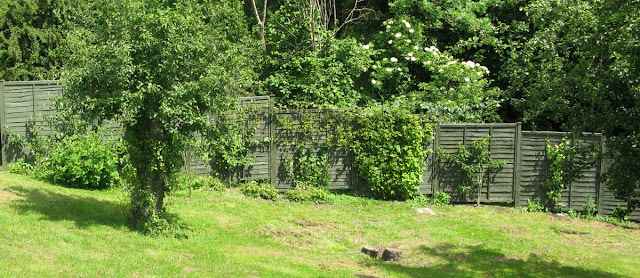
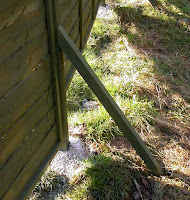
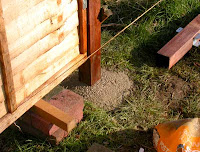
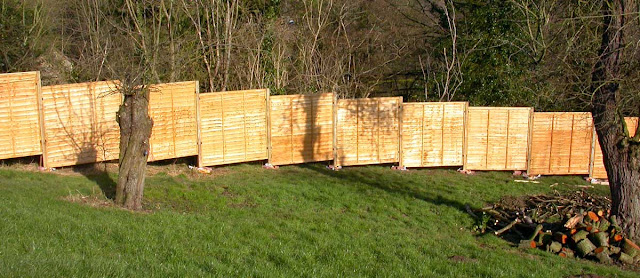
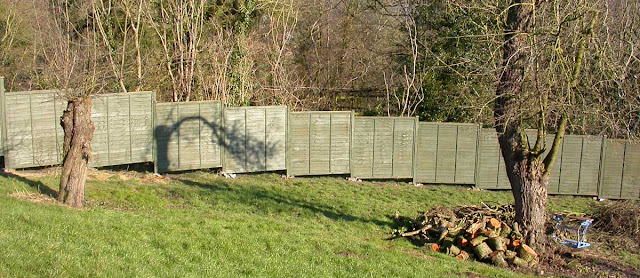




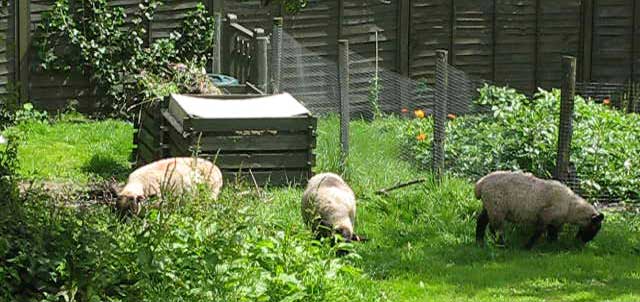
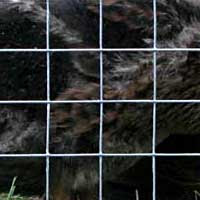
No comments:
Post a Comment